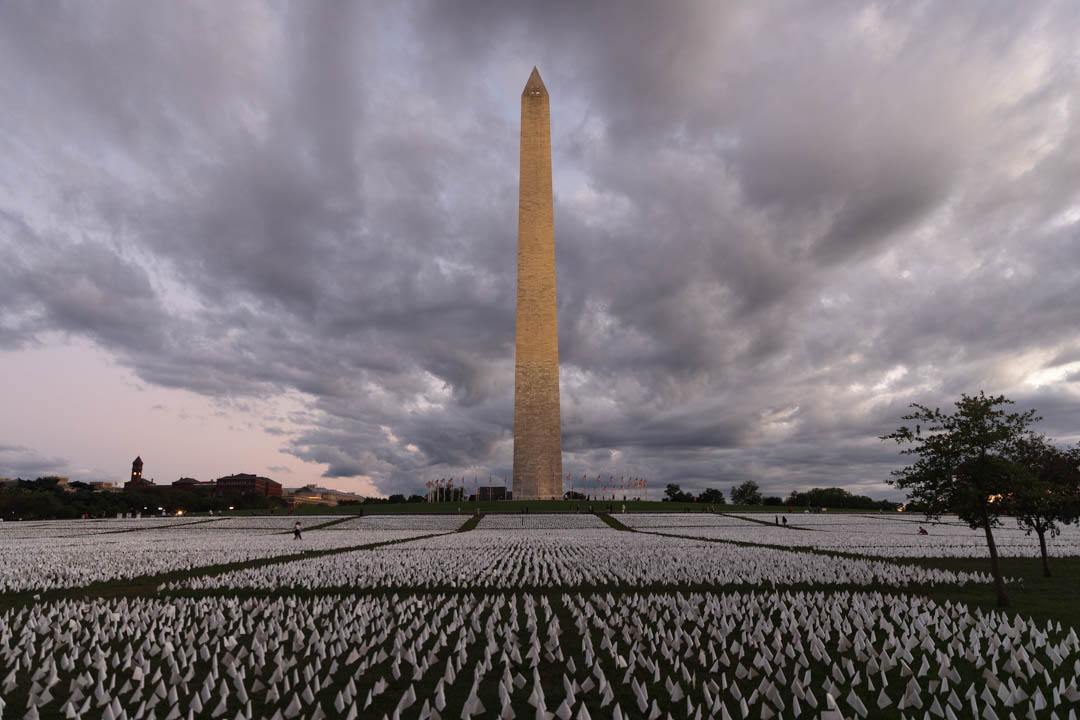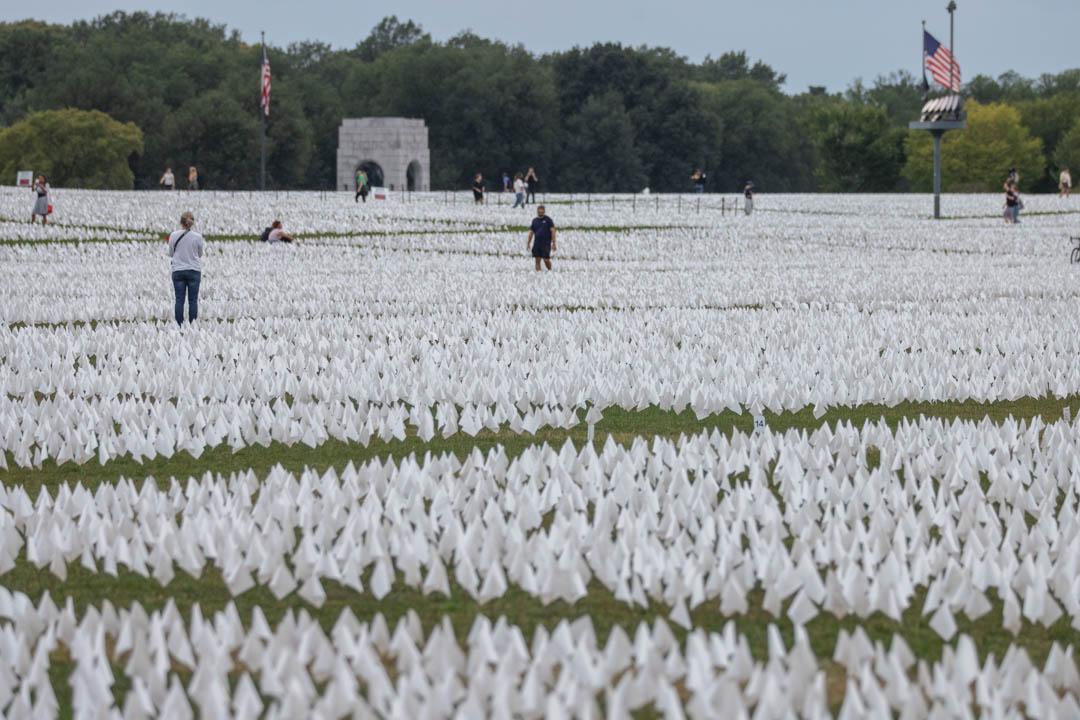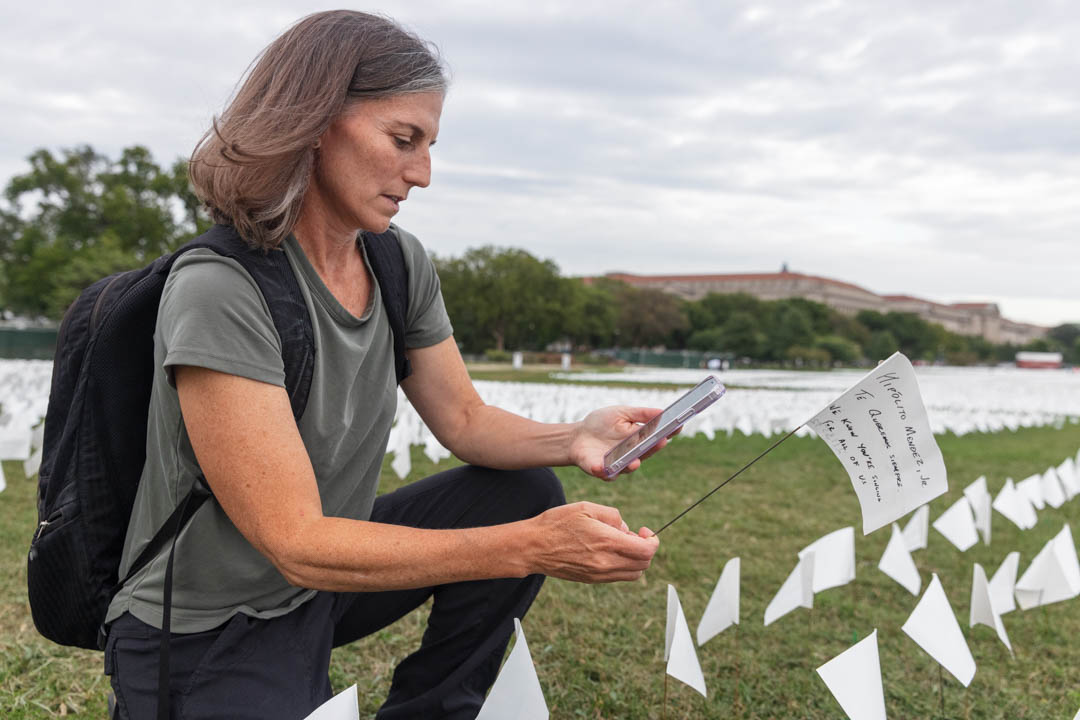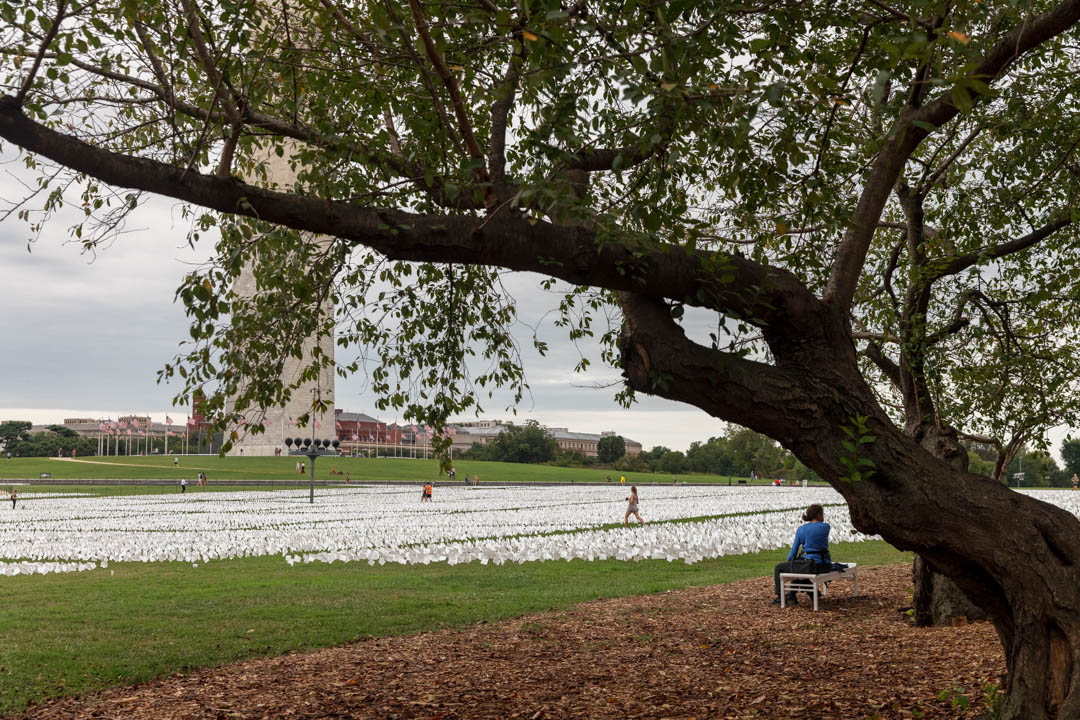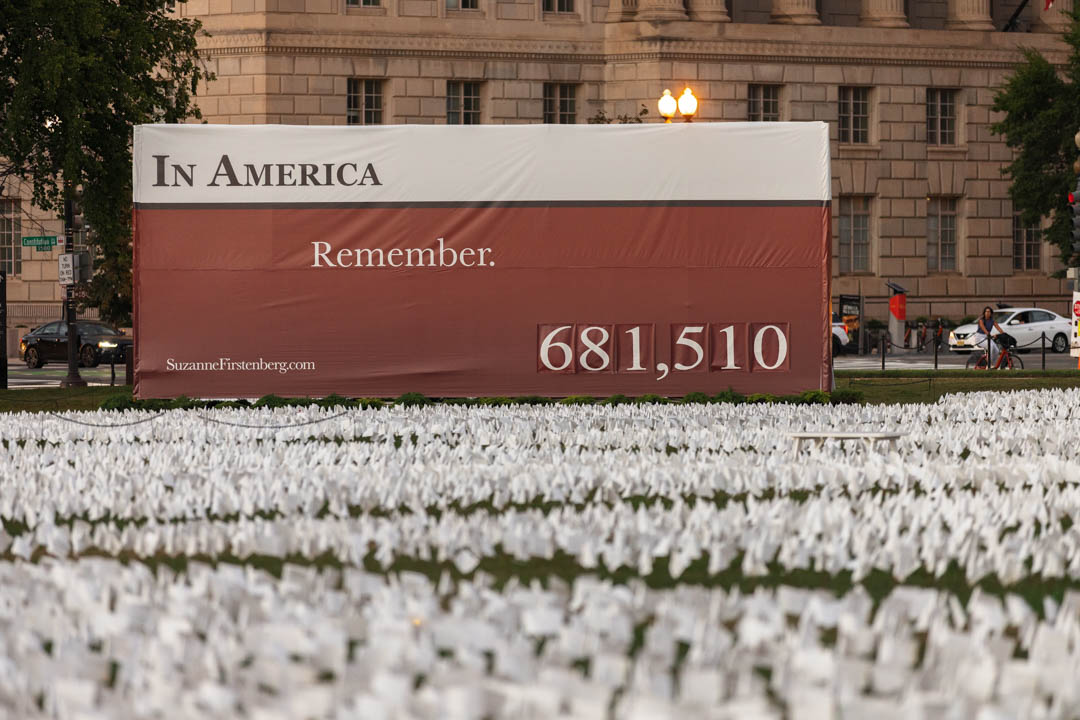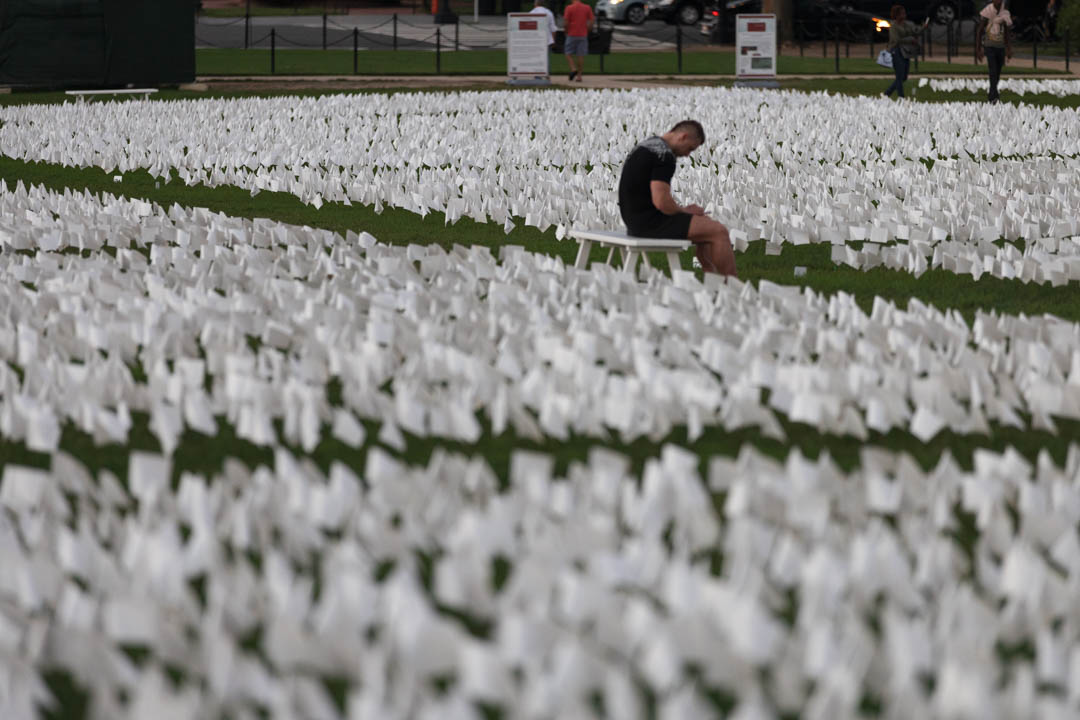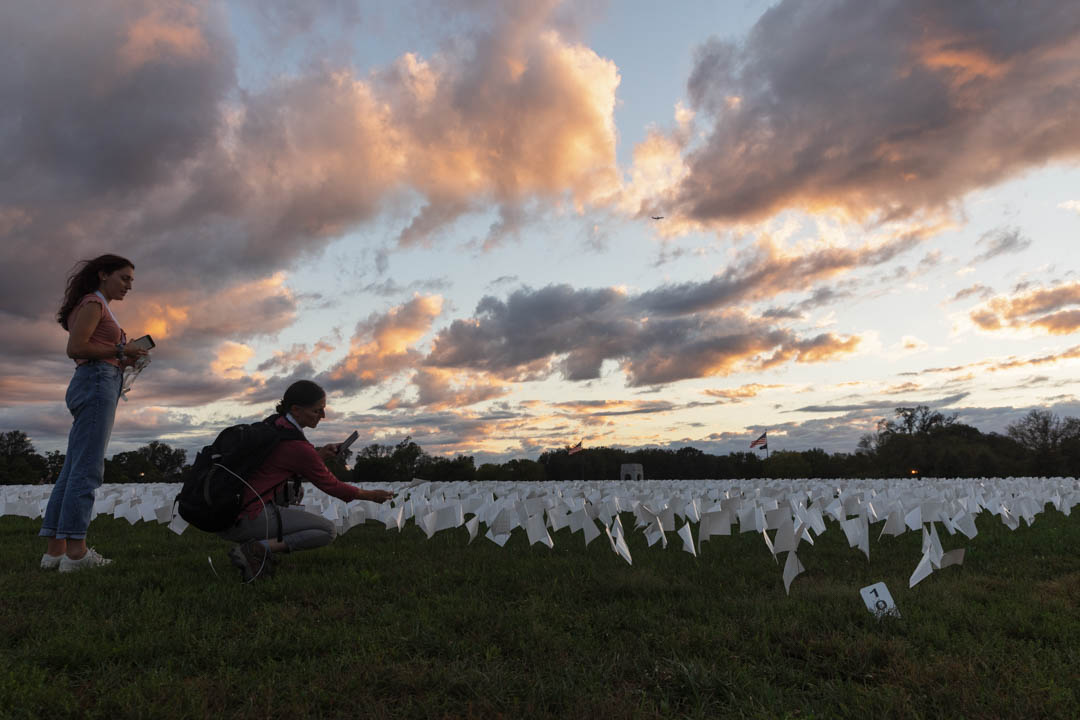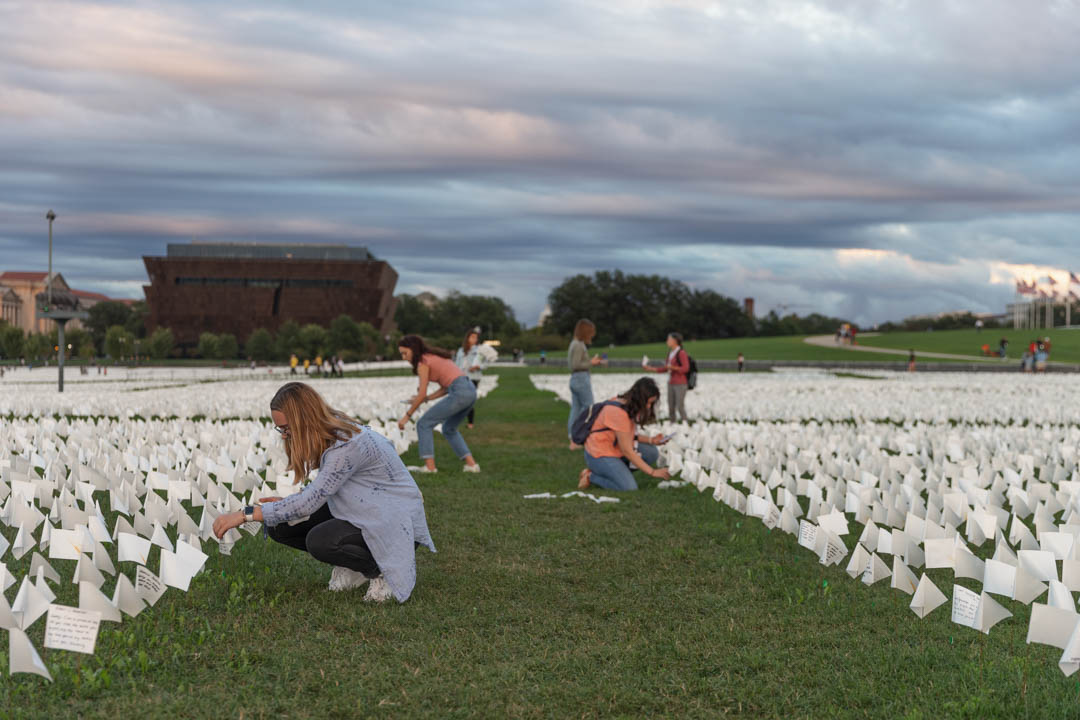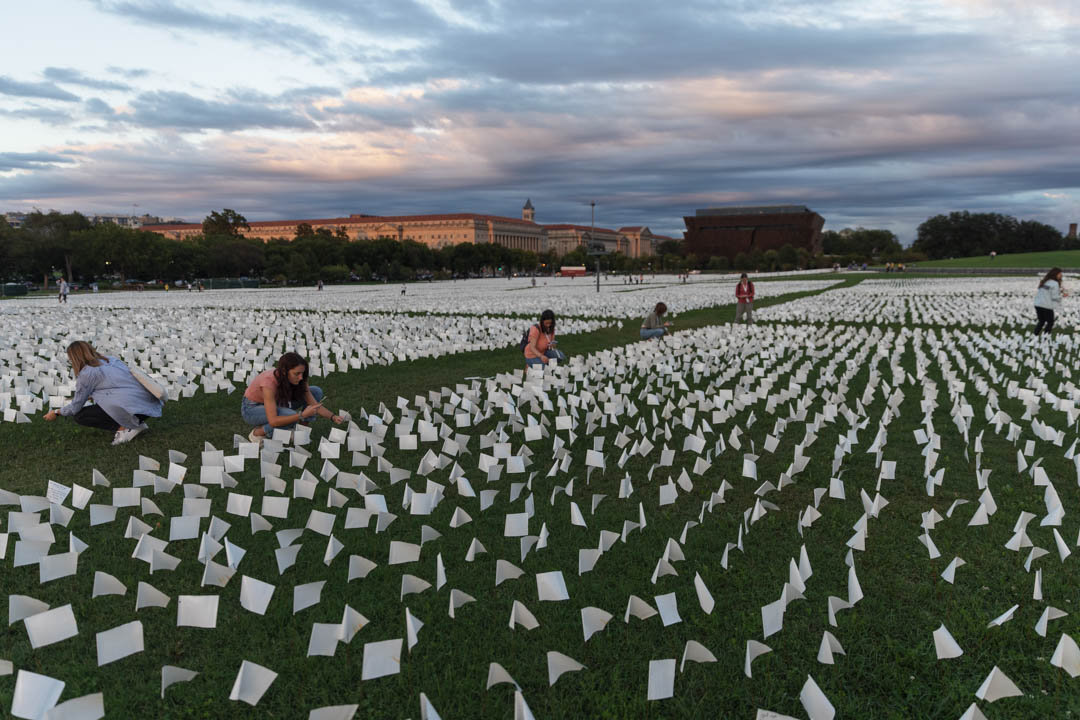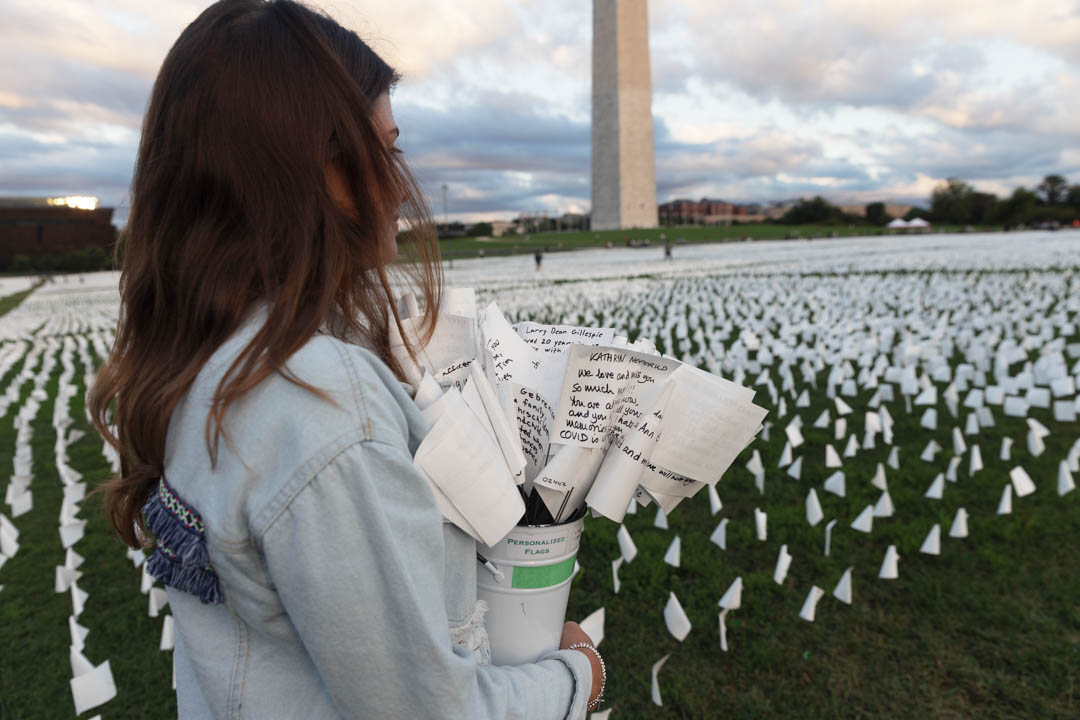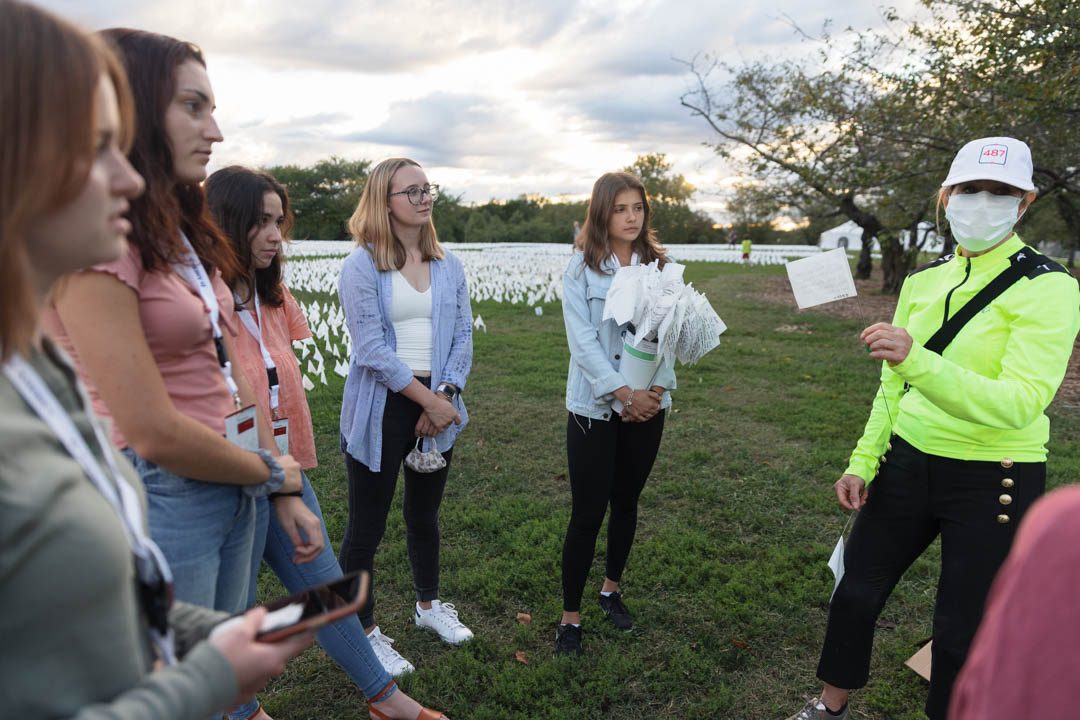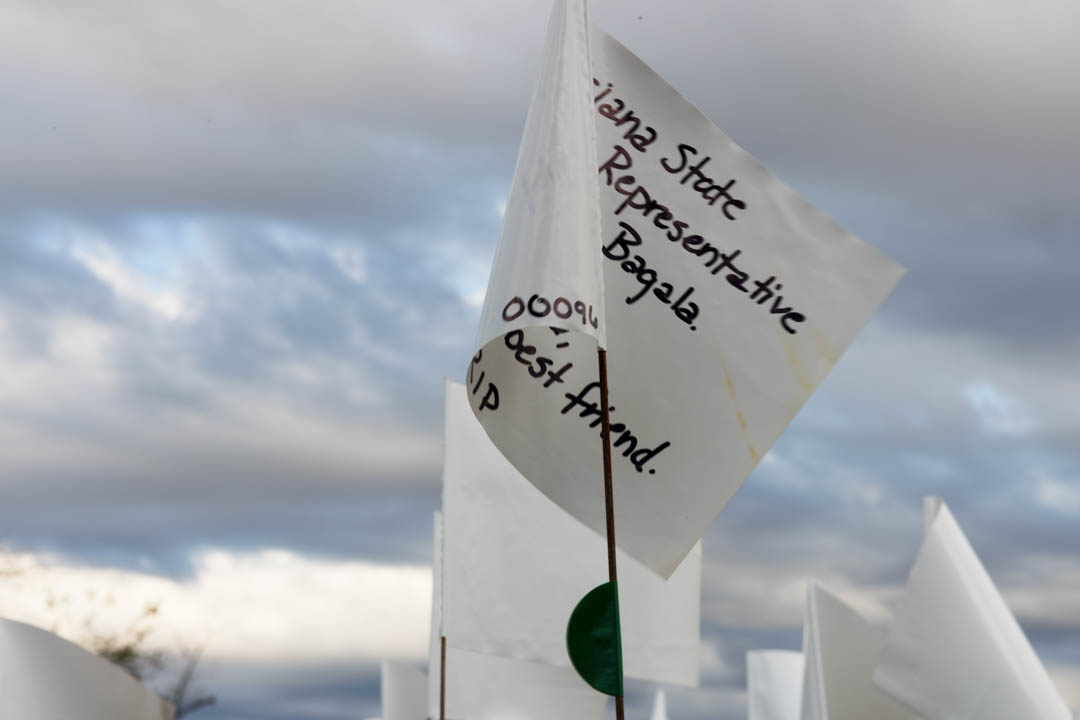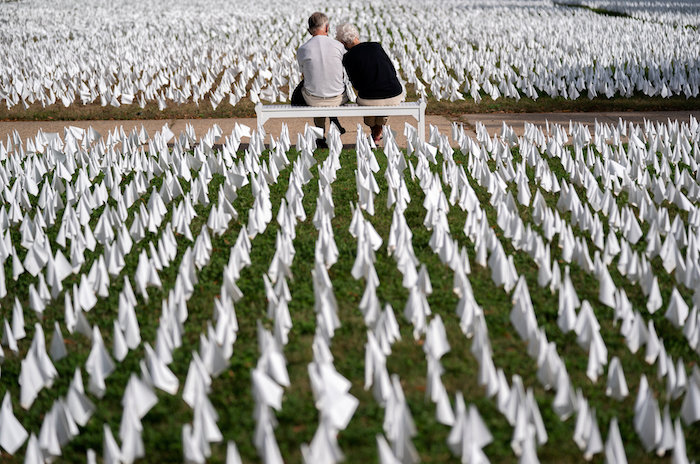In the early morning hours as the sun begins to rise, the usually bustling National Mall feels somber. Without the chatter of tourists and the hum of traffic, visitors can hear the rustling of more than 600,000 white flags that dot the landscape near the Washington Monument.
Every flag planted in artist Suzanne Brennan Firstenberg’s installation “In America: Remember” represents an individual in the United States who died from COVID-19. A billboard displaying the latest death toll is updated each day.
A team of George Washington University researchers, led by Sarah Wagner, professor of anthropology in the Columbian College of Arts and Sciences, has been geolocating flags that have a personal dedication written by family or friends of the deceased in order to bring the visual art into the digital space.
Dr. Wagner and five student researchers—Erin Anderson, Helena Betancourt, Catalina Campos, Alex Goldbeck and Victoria Ravel—are working on this project. They comb through the rows of flags daily, photographing every personalized flag they see to add to the digital collection. The field of flags creates a “somber, beautiful effect,” she said.
“Sometimes people stop and ask us what we're doing because it looks a little strange, we're holding the flags against the wind to snap the photo and then adding green tags to the stem of each flag that we've just geolocated,” Dr. Wagner said. “But that has been a really welcome opportunity to talk with families, or a friend, or whomever has dedicated a flag or is just moved by the space. It’s been rewarding for those of us on the ground.”
Individuals interested in memorializing someone they’ve lost to COVID-19 can either submit a dedication online or visit the installation in-person and, with the help of on-site volunteers, write a personalized message on a flag and plant it somewhere among the 22-acre expanse.
The collaboration between Ms. Firstenberg and Dr. Wagner grew from conversations about the GW research project “Rituals in the Making,” a National Science Foundation-funded study of COVID’s impact on funeral, burial and commemorative practices. Dr. Wagner and the project’s faculty and student research team are largely focusing on how mourning rituals move into digital spaces. “In America” and its field of flags, she noted, fill a gap by offering insights into the improvised, creative forms used to remember lives lost to the pandemic.
“In America: Remember” is a reprisal of Ms. Firstenberg’s original installation, “In America: How Could This Happen…,” which was located near RFK stadium in the District in fall 2020. Since then, the death toll in the United States has increased by more than 400,000. The flags will be on display until Oct. 3.
Below is a gallery of the installation:


